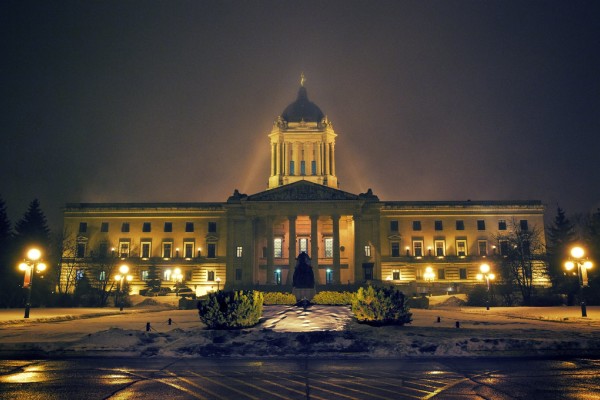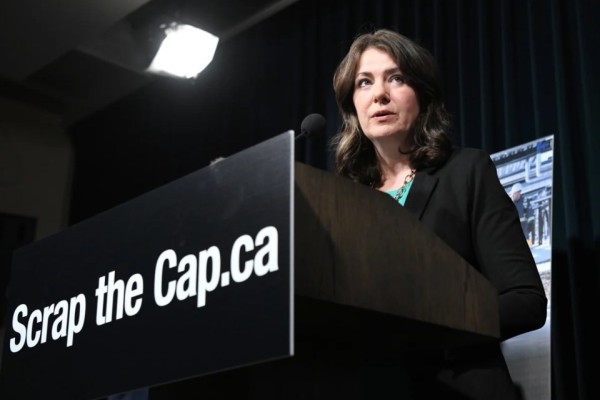Who really benefits from Ontario’s Bill 23?
Ford’s 2018 campaign promise to PC-friendly developers makes the answer clear

Ontario’s Greenbelt includes two million acres of protected land including farmland, forests, wetlands, rivers, and lakes. Photo courtesy Ontario Farmland Trust.
Now that the head-shaking over Ontario’s Bill 23, the More Homes Built Faster Act, has settled, one thing is widely agreed: the only possible beneficiaries are real estate developers. And the developers who stand to benefit most are major supporters of the Progressive Conservative Party of Ontario, many of whom own property surrounding the highway that would cut across protected areas of the Greenbelt.
Puzzled critics of Bill 23 welcomed news in January that the Ontario Provincial Police (OPP) Organized Crime Bureau was reviewing complaints alleging the Ford government had rewarded major political contributors in the land development business with inside information that certain parcels of land within the Greater Toronto Area were being removed from the Greenbelt agricultural protection area.
This came in the wake of announcements by both the Integrity Commissioner of Ontario and the Auditor General of Ontario that they had opened investigations into the same matter. The integrity commissioner is investigating whether Steve Clark, the Minister of Municipal Affairs and Housing, provided inside information to political supporters. At the same time, the auditor general is investigating the broad financial implications of developing the Greenbelt lands.
Ford has been eyeing selling off slices of the Greenbelt since 2018 when, during his election campaign, a video emerged of Ford promising a group of developers at a private fundraiser that if elected premier, he would open a “big chunk” of the Greenbelt to development—referring to the protected land as “just farmer’s fields.” Ford would continue: “we’re gonna’ start building.”
The person who leaked the video, Chris Ballard, then the Liberal Environment Minister, called it proof that “Doug Ford has made secret promises to big developers.”
Ford fumbled an attempt to justify his plan by claiming that it was not originally his idea. “I’ve already talked to some of the biggest developers in the country,” he said, “and again, I wish I could say it’s my idea, but it was their idea.”
This was, of course, precisely what many had already suspected.
Enter Highway 413, the GTA West Corridor, a controversial $10 billion plan scrapped by the previous Liberal government due to a study that concluded the new route would destroy over 400 acres of the Greenbelt to construct a new 60 kilometre highway through environmentally sensitive lands north of Vaughn (this would save commuters only 30 seconds of travel time).
As promised, Ford began the resurrection of the plan shortly after gaining office—to the benefit of his largest supporters.
It was reported that eight of Ontario’s largest developers—including the Cortellucci, DeGasperis, Guglietti and De Meneghi families, John Di Poce, Benny Marotta, Argo Development and Fieldgate Homes—owned 3,300 acres of Greenbelt-adjacent land. Already valued at nearly $500 million, the land could see its value skyrocket if the highway were constructed. The Ford government had assisted in fast-tracking development on some of the subject lands.
According to the same report, four of the developers had connections to the Ford government, while most are described as “prolific PC donors” that had contributed at least $813,000 to the Conservative war chest since 2014.
However, in response to concerns voiced by municipal governments, environmental advocates, and members of the public, the federal government would intervene. On May 13, 2021, the project was designated for review under the Federal Impact Assessment Act, thereby halting Highway 413. With federal brakes on Ford’s highway plan, developers were now facing delayed profits—or worse, losses, if 413 is scrapped for good by Ottawa.
A new plan then emerged in December when the Ford government unveiled the Housing Affordability Task Force to provide recommendations on “opportunities to address housing affordability.” It was chaired by Jake Lawrence, Chief Executive Officer and Group Head of Global Banking and Markets at Scotiabank, and included land development and real estate industry executives. After a quick two months, their report was published on February 8, 2022. It recommended more housing density across the province, ending “exclusionary municipal rules that block or delay new housing,” and preventing “abuse of the housing appeals system.”
On October 25, 2022 the new bill was put forward. Ostensibly to accelerate housing construction needed to address the “housing crisis” created in Ontario by “increased immigration” Steve Clark tabled Bill 23. It has been criticized by virtually everyone except developers.
The bill made sweeping changes to a multitude of statutes—including the Planning Act, the Conservation Authorities Act, the Environmental Assessment Act, and the Heritage Act, and exempted some projects from the Environmental Assessment Act. It also reduced or eliminated completely, development charges for certain types of housing development.
Days later, on November 4, Clark continued the fire sale with the announcement of a plan to remove 7,400 acres of protected land from the Greenbelt to construct “affordable homes.”
In response, Democracy Watch and Environmental Defence asked the OPP to investigate, alleging that “there may be something criminal going on.”
Greenbelt lands are not developable. Once removed, they are open for re-zoning from agricultural to residential or other uses, thereby increasing their market value. If a buyer—say a developer—knew in advance that a parcel of the Greenbelt was going to be re-designated, they could realize windfall profits.
It must be asked then, cui bono (“who benefits”)? Ford’s 2018 campaign promise to PC-friendly developers and the plunder of Greenbelt lands enabled by Bill 23 makes the answer clear. The trail leads to the developers named as well as Premier Ford.
Back in 2014, at the close of Québec’s highly publicized inquiry into province-wide corruption, CBC asked a question that remains relevant almost ten years later: “Does Ontario need a Charbonneau-style corruption inquiry?”
Ken Grafton is a writer living by the river in Aylmer, Québec, just downwind from Parliament Hill, with global executive-level experience in engineering and telecommunications. He is a freelance contributor to the Hamilton Spectator and the Chicago Tribune. His work has also been published in the Hill Times, National Observer, National Newswatch, Canadian Dimension, the Ottawa Citizen, National Post, the Welland Tribune, the Peterborough Examiner, the St. Catherines Standard, the Niagara Falls Review, the Waterloo Region Record, the Burlington Post, the Ontario Times, the Muskoka Times, Cambridge Times, the New Hamburg Independent, Hamilton News, Global News, Rabble, BuzzFlash, the Western Standard, Building Magazine, and The Low Down to Hull and Back.










